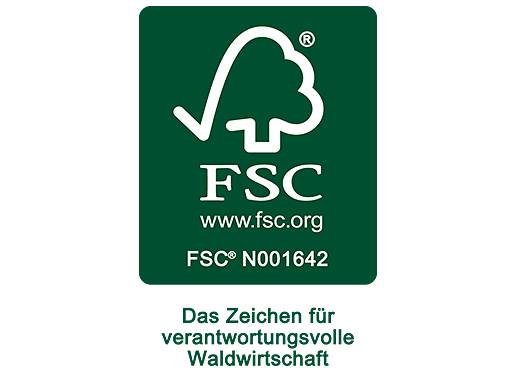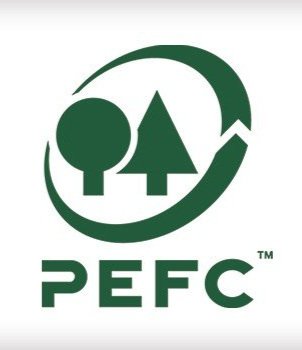December 2020
For some of us Christmas trees play a central role in creating the festive feeling at the end of the year. Though the first mention of the term ‘Christmas tree’ in English is recorded in 1835, decorating evergreen trees in winter has been done for a far longer time. But how can we continue this tradition considerately?
Getting a Natural CHRISTMAS Tree
Before buying a tree, consider first and foremost whether you need one in your home, for instance in cases where you plan to travel to friends or relatives to spend Christmas with them.
THE CUT CHRISTMAS TREE
Unlike artificial trees, crop-grown natural trees typically use less water, provide temporary carbon sequestration and clean oxygen, and give refuge for wildlife during their life cycle.
Most are from dedicated, sustainable farms. Fir, pine and spruce can grow in low-quality soil, and the advantage is that, as a crop, multiple are planted in place of one that is chopped down.
Buying a pre-cut tree from a lot in town is more consumer-friendly, and most get their stock from sustainable farms – but if you’re unsure, always ask the seller!
The down-side of tree lots is that their stock tends to be transported over long distances, especially when buying in an area where you can’t support a local grower.It’s typically illegal to cut down a tree in an open forest. Some might allow it with a permit, but even this will be strictly regulated, i.e., only certain tree diameters and certain tools allowed.
Mostly, buying from a local, sustainably sourced seller is better than the distance and travel needed to find and then chop a wild tree in a forest, which risks interrupting the local environment and harming wildlife.
Look for trees that are FSC or PEFC-certified.
Find out where to get a sustainable, organic Christmas tree in your area through a simple internet search.
Like food, trees can also be certified organic, which you can also identify from additional labels. This means:Chemical-synthetic pesticides and easily soluble mineral pesticides have been avoided.
Grass and weeds have been kept down either mechanically or by use of sheep.
They grow in mixed cultures, making them less susceptible to harmful insects whilst also promoting beneficial ones.
THE LIVING CHRISTMAS TREE
A living, potted tree is the most sustainable option for bringing the look and scent of a Christmas tree into your home. You can nurture them outside when out of season and bring them in for winter, year after year. Just make sure the tree is adapted to your local climate.
Get one from a nearby nursery to support local businesses and avoid lengthy travel distances.
It’s important to know where the seed it from, as it may have come from far away, on a plantation that does not respect its workers.
Potted trees will not be as large as cut ones and will eventually need to be planted into a plot as they mature.
Why not try renting a tree? Since it’s only for the festive season, it might be worth renting a living tree. Check your local options!
Note that renting tends to be more expensive due to maintenance costs, but plenty of fulfillment can be had, knowing it’s the more sustainable option.Consider donating to tree-planting organisations when you buy your Christmas tree. There are loads! For example, Arbor Day Foundation, Bergwaldprojekt, #teamtrees, ReforestAction, OneTreePlanted, Plant for the Planet, Trees For Cities, Neighborhood Forest, World Land Trust, and Tree Aid.
CARING FOR YOUR LIVING TREE
Once bought: Care for your tree properly to make it last longer.
Know your stand!
Make sure you have a fresh cut
Water immediately
Plan your placement
Water often
Plan to recycle
NATURAL CHRISTMAS TREE ALTERNATIVES
Here are some ideas for decorative natural alternatives for a conifer:
You could also embrace an alternative; instead of bringing in a cut tree, decorate your existing house plants!
Or, opt for the festive atmosphere that wreaths, branches and cuttings bring into your home.
A homemade or upcycled tree would also be an excellent opportunity to get creative. The following guides can help you:
THE ARTIFICIAL CHRISTMAS TREE
Natural trees will mostly end up being better for the environment that artificial ones, as they can be recycled and replaced with new trees. The materials and production methods used in a lot of artificial trees also majorly sets them back in comparison.
It’s ultimately up to individual use and the time over which an artificial tree is used that makes it more eco-friendly.
Consider the following when opting for or using an artificial tree:
PVC is the material used to imitate a tree’s needles, however it’s a harmful component that could expose you to carcinogens as it breaks down. Opt for trees made of polyethylene (PE) instead, as PE is non-toxic and is easier to recycle.
Likewise, avoid glossy trees, as they’re often coated in lead, which sheds over time.
Also go for ones without fitted lights, so that if one bulb goes out, the whole thing isn’t rendered defunct.
Store your artificial tree properly between seasons to extend its life. Clean it with a hose or in the bathtub from time to time if it gets dusty (as long as it has no lights on it).
THE SUSTAINABLE “artificial” CHRISTMAS trees
Companies like Hello Yellow House or Happy XMas Trees make Christmas trees out of sustainable wood, and companies like Cardboard Christmas make lovely trees from recycled cardboard.
DISPOSING OF YOUR CHRISTMAS TREE
Christmas is over. Now we need to think about how to get rid of our Christmas trees in the most sustainable way.
Here are some points to take into consideration.
DISPOSING OF Cut CHRISTMAS trees
You can repurpose your used tree, but only if it’s certified organic; otherwise, the chemicals used to grow it could harm animals or the environment when it ends up back in nature. Also always make sure no shred of decoration remains on it.
Simply chop it up and put it on your compost heap.
Use it for firewood, turn it into chippings for your flower beds, or use the branches as frost protection for your outdoor plants – this also prevents them from sprouting too early.
Donate it to your local zoo or someone who has livestock so that animals can eat the needles or play with the trunk.
Lay down a pile of branches for small animals to shelter from predators and the cold.
Avoid dumping it in the woods, as even organic trees take years to completely decompose.
Every country - and sometimes region – has its own rules on recycling Christmas trees. This could be anything from kerbside pick-up to a designated disposal point in a park.
Look up your local municipality’s information on tree disposal, which should be displayed on their website. It could be worth reaching out too, since some cities use Christmas trees in many ways, like as erosion barriers, animal habitats, fire training, pathway-making, etc.
Ask the seller about disposal when buying the tree.
Your national conservation organisation or regional newspaper should be able to inform you about your area’s disposal options.
DEALING WITH A LIVING TREE
Most of us have a cut tree at Christmas. But, what to do at the end of the season, when having a living tree? Here are some tips:
DISPOSING OF Artificial CHRITSMAS trees
Note that artificial trees are essentially impossible to recycle, since they’re made of numerous different materials and chemical substances, making them hard to separate and dispose of.
That’s why they’re mainly destined for landfill. However, parts like the base are usually easily detached and can be recycled if they’re made of metal or certain plastics. In any case, consult your local recycling depot.
It’s best to keep reusing your artificial tree every year. At least 10 seasons makes it as good as a real tree.
Consider donating your artificial tree if you no longer want it. Another family home, local charities, old peoples’ homes or schools are some examples of places it could be appreciated.
You can repurpose it by dismantling it to make new decorations
OTHER CONSIDERATIONS
Lights
Use LED bulbs for your Christmas tree lights, which use 90% less energy and last much longer than incandescent bulbs.
Decorations
It’s good to use and enjoy the same tree decorations every year, so opt for timeless ones that you like. It’s also worth checking second-hand sources and seeing if you can donate yours if you no longer want them.
Or, for more fun, make your own!
Check out guides like this list of natural ornament-making ideas or this list of things to use to decorate your tree sustainably.
Tree skirt
Ask yourself if you need a tree skirt. If you do, though, opt for one made of eco-friendly textiles. Like the tree’s other decorations, reuse it, get it second hand or make your own if you can.
Learn more
Check our sources: Bibliography →




















